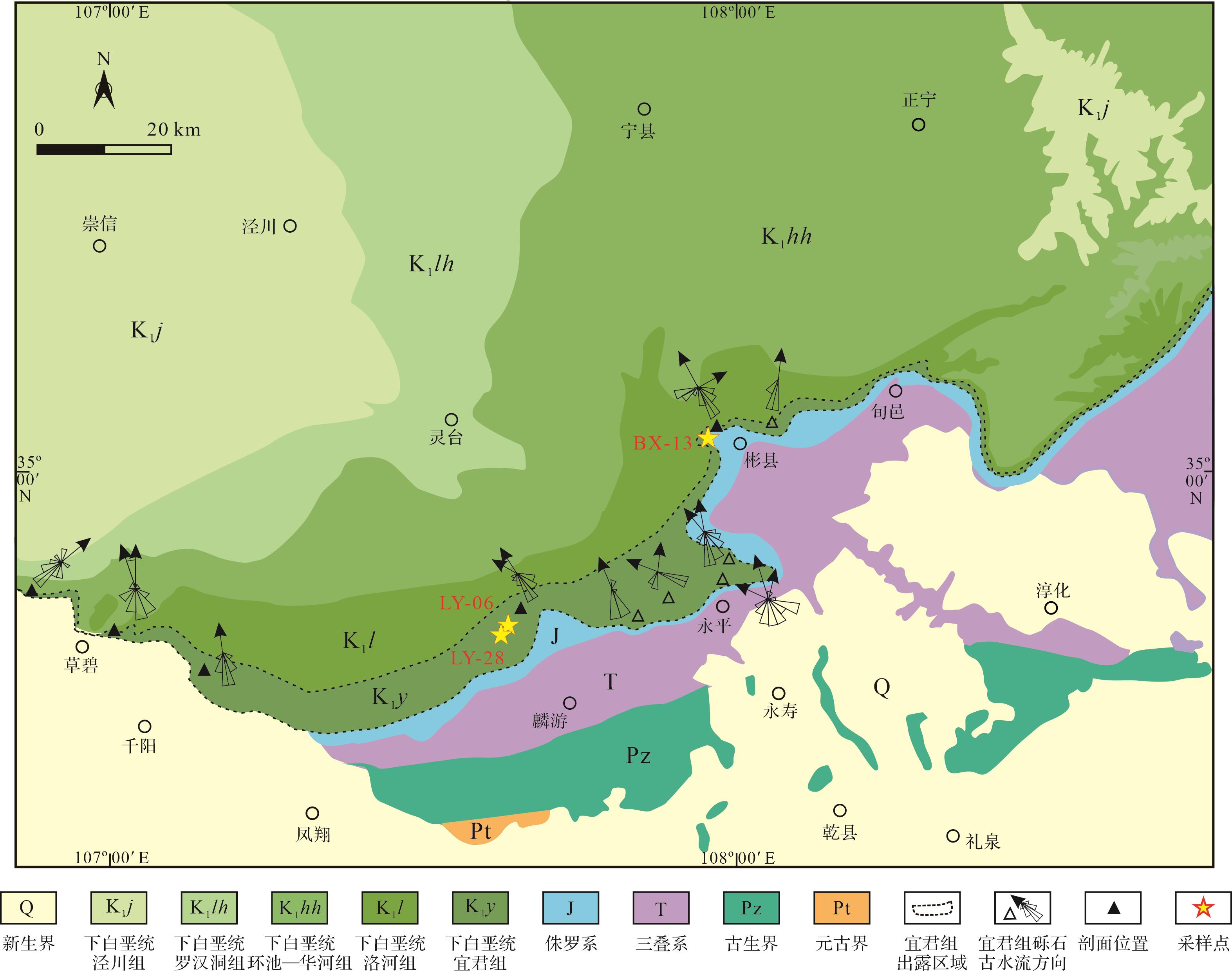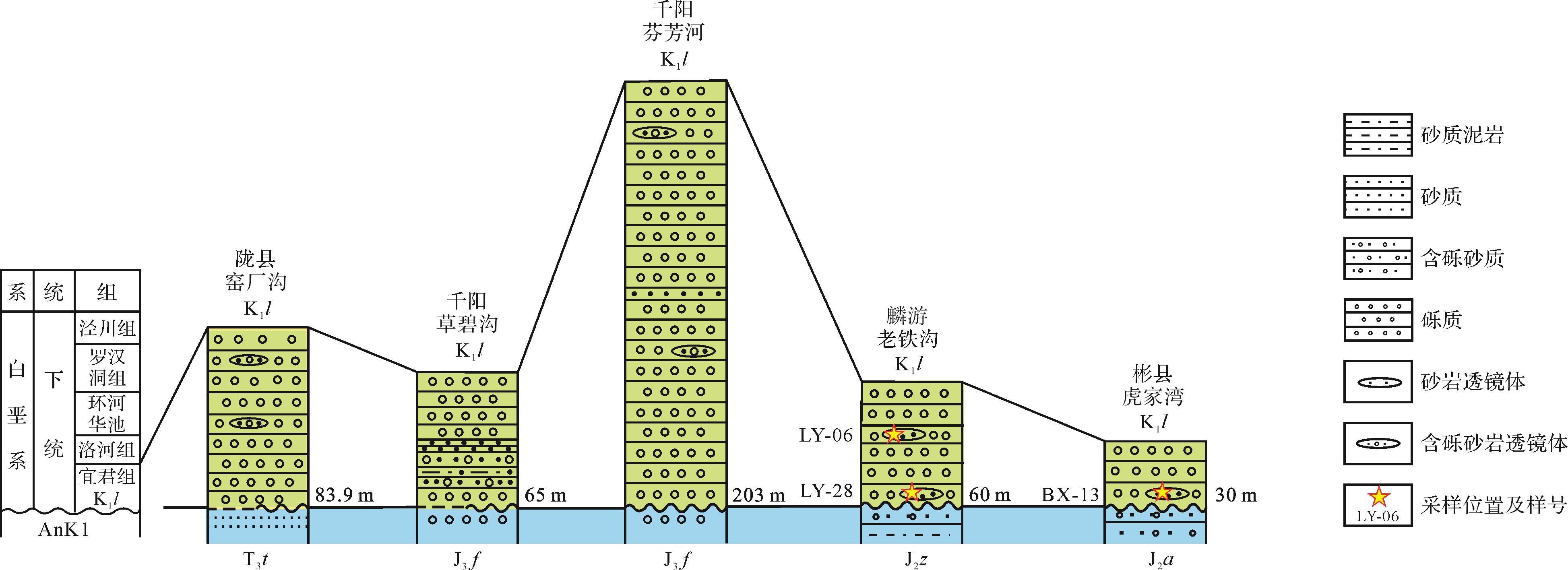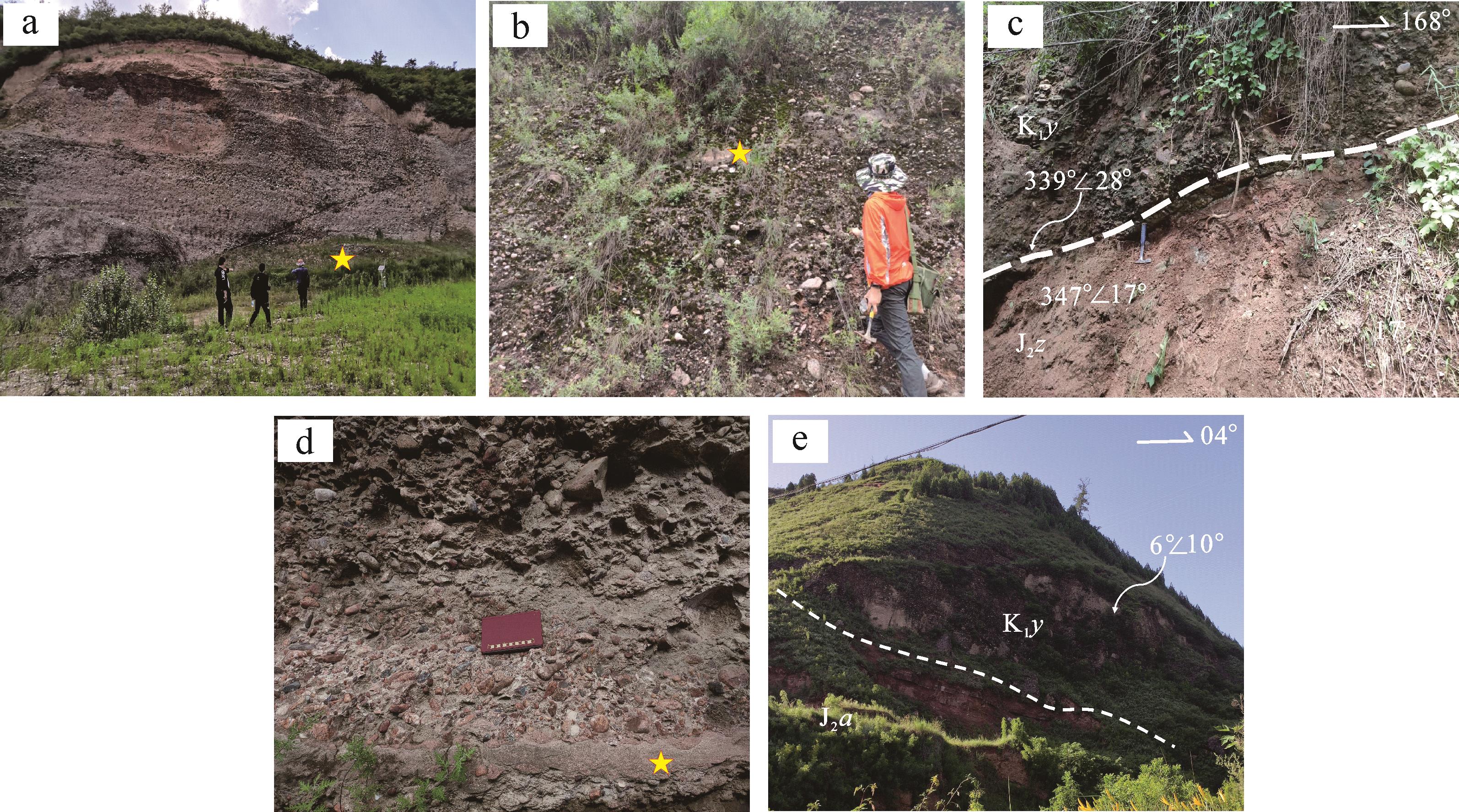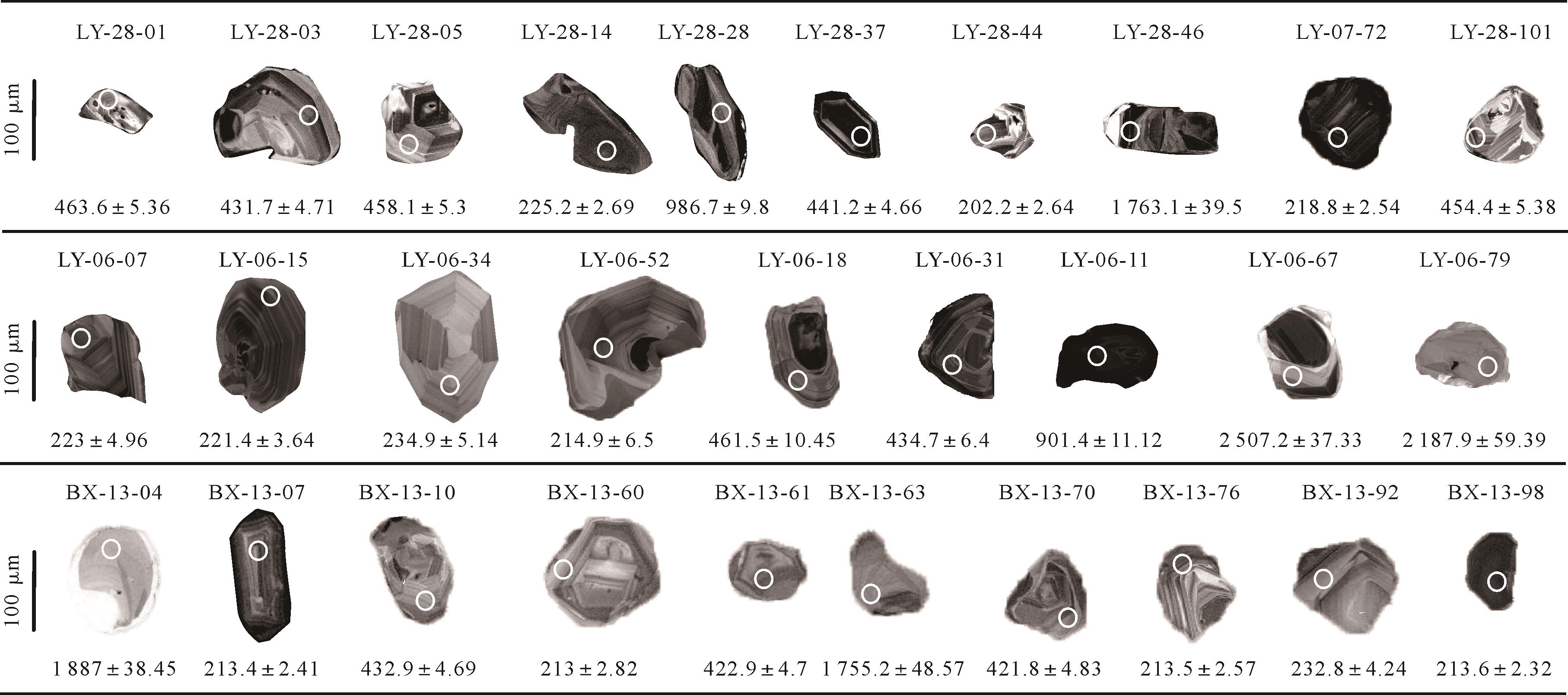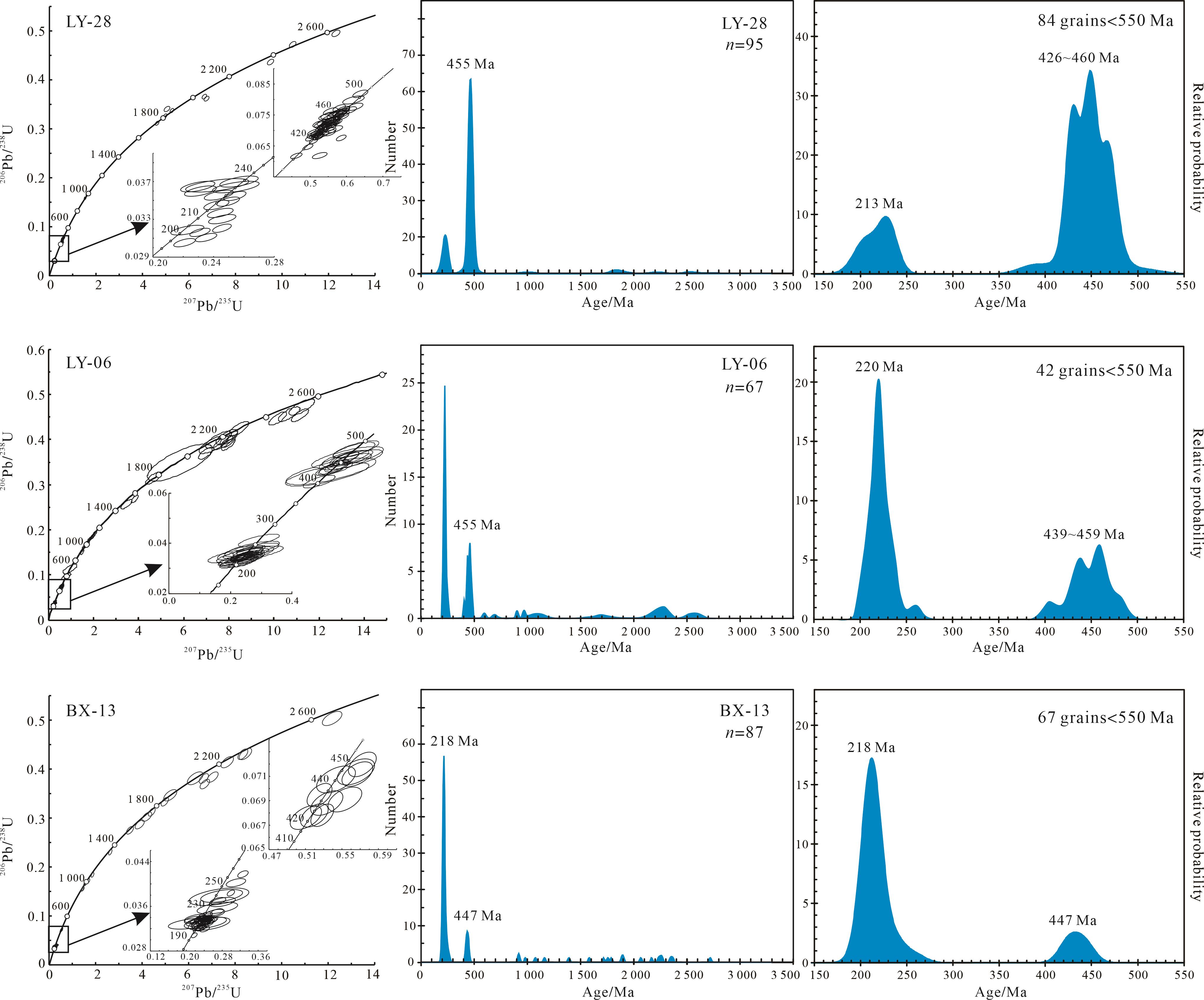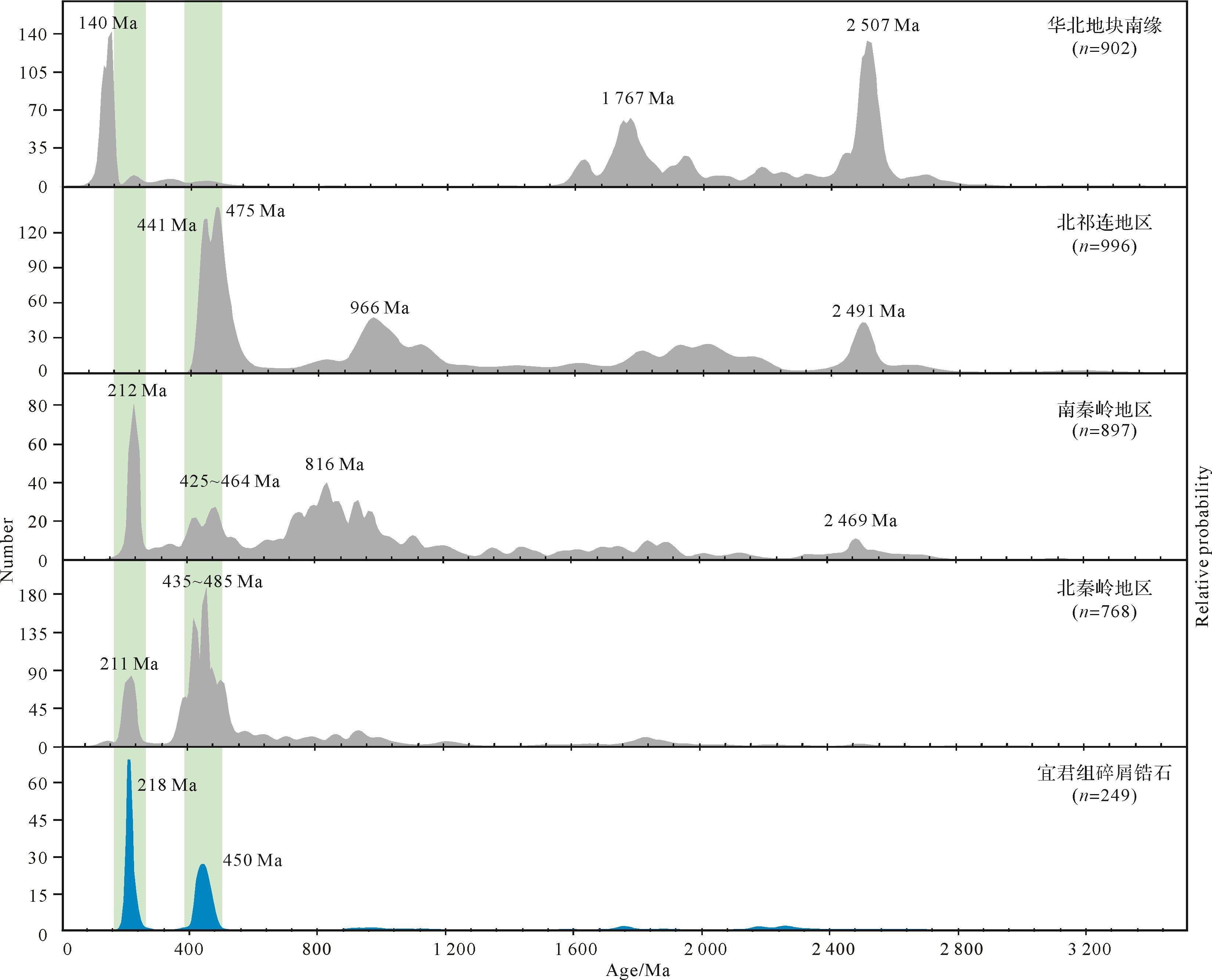| [1] |
刘池洋, 赵红格, 桂小军, 2006: 鄂尔多斯盆地演化—改造的时空坐标及其成藏(矿)响应[J]. 地质学报, 80, 617-638.
|
Liu Chiyang, Zhao Hongge, Gui Xiaojun, et al. Space-time coordinate of the evolution and reformation and mineralization response in Ordos Basin[J]. Acta Geologica Sinica, 2006, 80(5): 617-638. |
| [2] |
王建强. 鄂尔多斯盆地南部中新生代演化—改造及盆山耦合关系[D]. 西安:西北大学,2010. |
Wang Jianqiang. Mesozoic-Cenozoic basin evolution-reforming and basin-mountain coupling in southern Ordos Basin[D]. Xi'an: Northwest University, 2010. |
| [3] |
张天福, 苗培森, 程先钰, 2020: 鄂尔多斯盆地早白垩世含铀岩系的新发现及其层序地层[J]. 大地构造与成矿学, 44, 633-647.
|
Zhang Tianfu, Miao Peisen, Cheng Xianyu, et al. Stratigraphic characteristics of a newly discovered uranium-bearing stratum in the Lower Cretaceous, Ordos Basin[J]. Geotectonica et Metallogenia, 2020, 44(4): 633-647. |
| [4] |
任战利, 祁凯, 刘润川, 2020: 鄂尔多斯盆地早白垩世构造热事件形成动力学背景及其对油气等多种矿产成藏(矿)期的控制作用[J]. 岩石学报, 36, 1213-1234.
|
Ren Zhanli, Qi Kai, Liu Runchuan, et al. Dynamic background of Early Cretaceous tectonic thermal events and its control on various mineral accumulations such as oil and gas in the Ordos Basin[J]. Acta Petrologica Sinica, 2020, 36(4): 1213-1234. |
| [5] |
庞军刚, 李文厚, 国吉安, 2021: 鄂尔多斯盆地白垩纪沉积体系及古地理演化[J]. 西北大学学报(自然科学版), 51, 314-324.
|
Pang Jungang, Li Wenhou, Guo Ji'an, et al. Depositional system and paleogeographic evolution of the Cretaceous of Ordos Basin[J]. Journal of Northwest University (Natural Science Edition), 2021, 51(2): 314-324. |
| [6] |
禹江. 鄂尔多斯盆地西南缘早白垩世宜君组沉积环境及构造意义[D]. 西安:长安大学,2018. |
Yu Jiang. Sedimentary environment and tectonic significance of the Early Cretaceous Yijun Formation in the southwestern Ordos Basin[D]. Xi'an: Chang'an University, 2018. |
| [7] |
程先钰, 张天福, 苗培森, 2023: 鄂尔多斯盆地西南缘洛河组下段含铀砂岩锆石U-Pb年代学:对岩石圈伸展作用的启示[J]. 中国地质, 50, 853-871.
|
Cheng Xianyu, Zhang Tianfu, Miao Peisen, et al. Detrital zircon U-Pb geochronology of uranium-bearing sandstone in the Lower member of Luohe Formation in the southwest margin of the Ordos Basin: Implications for the lithospheric extension[J]. Geology in China, 2023, 50(3): 853-871. |
| [8] |
孙栋华, 江民忠, 陈江源, 2020: 鄂尔多斯盆地西南部多元地学特征及其找铀意义[J]. 铀矿地质, 36, 293-301.
|
Sun Donghua, Jiang Minzhong, Chen Jiangyuan, et al. The characteristics of multi-source geo-information and its significance to uranium exploration in the southwest of Ordos Basin[J]. Uranium Geology, 2020, 36(4): 293-301. |
| [9] |
朱强, 李建国, 苗培森, 2019: 鄂尔多斯盆地西南部洛河组储层特征和深部铀成矿地质条件[J]. 地球科学与环境学报, 41, 675-690.
|
Zhu Qiang, Li Jianguo, Miao Peisen, et al. Reservoir characteristics of Luohe Formation and metallogenic geological conditions of deep uranium in the southwestern margin of Ordos Basin, China[J]. Journal of Earth Sciences and Environment, 2019, 41(6): 675-690. |
| [10] |
徐阳, 凌明星, 薛硕, 2020: 鄂尔多斯盆地双龙地区砂岩型铀矿富集、迁移和成矿机制[J]. 大地构造与成矿学, 44, 937-957.
|
Xu Yang, Ling Mingxing, Xue Shuo, et al. Enrichment, transportation and ore forming mechanism of sandstone-type uranium deposits in Shuanglong area, Ordos Basin[J]. Geotectonica et Metallogenia, 2020, 44(5): 937-957. |
| [11] |
陈江源, 牛家骥, 郭佳, 2020: 鄂尔多斯盆地南缘崇信—泾川地区航放异常特征及铀矿找矿前景分析[J]. 地质与勘探, 56, 551-565.
|
Chen Jiangyuan, Niu Jiaji, Guo Jia, et al. Characteristics of aerial radioactive anomalies and prospect of uranium exploration in the Chongxin-Jingchuan area, southern margin of Ordos Basin[J]. Geology and Exploration, 2020, 56(3): 551-565. |
| [12] |
张字龙, 范洪海, 贺锋, 2018: 鄂尔多斯盆地西南缘下白垩统铀成矿条件分析[J]. 铀矿地质, 34, 193-200.
|
Zhang Zilong, Fan Honghai, He Feng, et al. Analysis of sandstone type uranium metallogenic conditions of Lower Cretaceous in the southwest margin of Ordos Basin[J]. Uranium Geology, 2018, 34(4): 193-200. |
| [13] |
Košler J, Sylvester P J, 2003: Present trends and the future of zircon in geochronology: Laser ablation ICPMS[J]. Reviews in Mineralogy and Geochemistry, 53, 243-275.
|
| [14] |
张岳桥, 廖昌珍, 2006: 晚中生代—新生代构造体制转换与鄂尔多斯盆地改造[J]. 中国地质, 33, 28-40.
|
Zhang Yueqiao, Liao Changzhen. Transition of the Late Mesozoic-Cenozoic tectonic regimes and modification of the Ordos Basin[J]. Geology in China, 2006, 33(1): 28-40. |
| [15] |
Peng H, Liu C Y, Wang J Q, 2021: Discovery of multiple tectonic reformations of the eastern Yingen-Ejinaqi Basin: Evidence from detrital chronology[J]. Acta Geologica Sinica (English Edition), 95, 693-695.
|
| [16] |
赵红格, 刘池洋, 王海然, 2015: 鄂尔多斯盆地西北缘早—中侏罗世延安期碎屑锆石LA-ICP-MS定年及其物源意义[J]. 地学前缘, 22, 184-193.
|
Zhao Hongge, Liu Chiyang, Wang Hairan, et al. LA-ICP-MS detrital zircon dating and its provenance significance in Yan'an Formation of the Early-Middle Jurassic in the northwestern margin of Ordos Basin[J]. Earth Science Frontiers, 2015, 22(3): 184-193. |
| [17] |
Zhao X C, Liu C Y, Wang J Q, 2016: Detrital zircon U-Pb ages of Paleozoic sedimentary rocks from the eastern Hexi Corridor Belt (NW China): Provenance and geodynamic implications[J]. Sedimentary Geology, 339, 32-45.
|
| [18] |
彭恒, 刘显阳, 刘池洋, 2022: 鄂尔多斯盆地西南缘中生代中晚期构造体制转化过程及其动力学背景[J]. 地质学报, 96, 387-402.
|
Peng Heng, Liu Xianyang, Liu Chiyang, et al. Spatial-temporal evolution and the dynamic background of the translation of Mid-Late Mesozoic tectonic regimes of the southwest Ordos Basin margin[J]. Acta Geologica Sincia,2022,96(2):387-402. |
| [19] |
张文龙, 陈刚, 章辉若, 2016: 唐王陵昭陵组砾岩碎屑锆石U-Pb年代学分析[J]. 沉积学报, 34, 497-505.
|
Zhang Wenlong, Chen Gang, Zhang Huiruo, et al. Detrital zircon U-Pb geochronology from Zhaoling Formation in Tangwangling[J]. Acta Sedimentologica Sinica, 2016, 34(3): 497-505. |
| [20] |
韩会平, 武春英, 白清华, 2014: 鄂尔多斯盆地乌审旗地区上古生界砂岩碎屑锆石U-Pb年龄及其地质意义[J]. 沉积学报, 32, 643-653.
|
Han Huiping, Wu Chunying, Bai Qinghua, et al. Zircon U-Pb dating of clastic sandstone in the Upper Paleozoic from Wushenqi area, Ordos Basin and its geological significance[J]. Acta Sedimentologica Sinica, 2014, 32(4): 643-653. |
| [21] |
王建强, 贾楠, 刘池洋, 2011: 鄂尔多斯盆地西南部下白垩统宜君组砾岩砾组分析及其意义[J]. 沉积学报, 29, 226-234.
|
Wang Jianqiang, Jia Nan, Liu Chiyang, et al. Fabric analysis of Yijun gravels of Lower Cretaceous in the southwestern Ordos Basin[J]. Acta Sedimentologica Sinica, 2011, 29(2): 226-234. |
| [22] |
庞军刚, 国吉安, 李文厚, 2011: 古沙漠记录的沉积体系及层序地层研究进展:以鄂尔多斯盆地白垩系为例[J]. 地层学杂志, 35, 95-102.
|
Pang Jungang, Guo Ji'an, Li Wenhou, et al. Advance of depositional system and sequence stratigraphy in paleo-desert record: Taking the Cretaceous strata in Ordos Basin as an example[J]. Journal of Stratigraphy, 2011, 35(1): 95-102. |
| [23] |
李孝泽, 董光荣, 靳鹤龄, 1999: 鄂尔多斯白垩系沙丘岩的发现[J]. 科学通报, 44, 874-877.
|
Li Xiaoze, Dong Guangrong, Jin Heling, et al. Discovery of Ordos Cretaceous dune rock and its significance[J]. Chinese Science Bulletin, 1999, 44(8): 874-877. |
| [24] |
谢渊, 王剑, 李明辉, 2004: 鄂尔多斯盆地早白垩世岩相古地理与地下水水质和分布的关系[J]. 地质通报, 23, 1094-1102.
|
Xie Yuan, Wang Jian, Li Minghui, et al. Relations of the Early Cretaceous lithofacies-paleogeography to groundwater quality and distribution in the Ordos Basin[J]. Geological Bulletin of China, 2004, 23(11): 1094-1102. |
| [25] |
王建强. 鄂尔多斯盆地西南部早白垩世原盆恢复及其演化[D]. 西安:西北大学,2007. |
Wang Jianqiang. Reconstruction of the Early Crataceous basin and its evolution in southwest Ordos[D]. Xi'an: Northwestern University, 2007. |
| [26] |
王建强, 刘池洋, 刘鑫, 2011: 鄂尔多斯盆地南部下白垩统演化改造特征[J]. 西北大学学报(自然科学版), 41, 291-297.
|
Wang Jianqiang, Liu Chiyang, Liu Xin, et al. Geologic characteristic and its evolution and reformation of Lower Cretaceous in southern Ordos Basin[J]. Journal of Northwest University (Natural Science Edition), 2011, 41(2): 291-297. |
| [27] |
秦江锋. 秦岭造山带晚三叠世花岗岩类成因机制及深部动力学背景[D]. 西安:西北大学,2010. |
Qin Jiangfeng. Petrogenesis and geodynamic implications of the Late-Triassic Granitoids from the Qinling orogenic belt[D]. Xi'an: Northwest University, 2010. |
| [28] |
刘池洋, 王建强, 张东东, 2021: 鄂尔多斯盆地油气资源丰富的成因与赋存—成藏特点[J]. 石油与天然气地质, 42, 1011-1029.
|
Liu Chiyang, Wang Jianqiang, Zhang Dongdong, et al. Genesis of rich hydrocarbon resources and their occurrence and accumulation characteristics in the Ordos Basin[J]. Oil & Gas Geology, 2021, 42(5): 1011-1029. |
| [29] |
谢渊, 王剑, 李令喜, 2010: 鄂尔多斯盆地白垩系粘土矿物的分布特征及其沉积—成岩环境意义[J]. 地质通报, 29, 93-104.
|
Xie Yuan, Wang Jian, Li Lingxi, et al. Distribution of the Cretaceous clay minerals in Ordos Basin, China and its implication to sedimentary and diagenetic environment[J]. Geological Bulletin of China, 2010, 29(1): 93-104. |
| [30] |
程守田, 刘星, 郭秀蓉, 李志德, 2000: 古沙漠沉积及其层序单元:以鄂尔多斯白垩纪内陆古沙漠盆地为例[J]. 中国地质大学学报(地球科学版), , 587-591.
|
Chen Shoutian, Liu Xin,Guo, et al. Xiurong Palaeo-desert deposition and sequence stratigraphic units:An example from cret aceous continent palaeo-desert basin in Ordos[J]. Journal of China University of Geosciences (Earth Science Edition),2000(06):587-591. |
| [31] |
何登发, 包洪平, 开百泽, 2021: 鄂尔多斯盆地及其邻区关键构造变革期次及其特征[J]. 石油学报, 42, 1255-1269.
|
He Dengfa, Bao Hongping, Baize Kai, et al. Critical tectonic modification periods and its geologic features of Ordos Basin and adjacent area[J]. Acta Petrolei Sinica, 2021, 42(10): 1255-1269. |
| [32] |
黄永波. 早白垩世鄂尔多斯南部沙漠起源与演化:志丹群磁性地层年代及沉积物磁化率测量[D]. 兰州:兰州大学,2010. |
Huang Yongbo. The origin and evolution of the desert in southern Ordos in Early Cretaceous: Constraint from magnetostratigraphy of Zhidan Group and magnetic susceptibility of its sediment[D]. Lanzhou: Lanzhou University, 2010. |
| [33] |
Ballard J R, Palin J M, Williams I S, 2001: Two ages of porphyry intrusion resolved for the super-giant Chuquicamata copper deposit of northern Chile by ELA-ICP-MS and SHRIMP[J]. Geology, 29, 383-386.
|
| [34] |
Zhang H F, Zhang B R, Harris N, 2006: U-Pb zircon SHRIMP ages, geochemical and Sr-Nd-Pb isotopic compositions of intrusive rocks from the Longshan-Tianshui area in the southeast corner of the Qilian orogenic belt, China: Constraints on petrogenesis and tectonic affinity[J]. Journal of Asian Earth Sciences, 27, 751-764.
|
| [35] |
魏方辉, 裴先治, 李瑞保, 2012: 甘肃天水地区早古生代黄门川花岗闪长岩体LA-ICP-MS锆石U-Pb定年及构造意义[J]. 地质通报, 31, 1496-1509.
|
Wei Fanghui, Pei Xianzhi, Li Ruibao, et al. LA-ICP-MS zircon U-Pb dating of Early Paleozoic Huangmenchuan granodiorite in Tianshui area of Gansu province and its tectonic significance[J]. Geological Bulletin of China, 2012, 31(9): 1496-1509. |
| [36] |
陈隽璐, 李好斌, 王洪亮, 2007: 秦祁结合部位王家岔石英闪长岩体锆石LA-ICPMS定年及地质意义[J]. 吉林大学学报(地球科学版), 37, 423-431.
|
Chen Junlu, Li Haobin, Wang Hongliang, et al. LA-ICPMS zircon U-Pb dating of a quartz diorite pluton from Wangjiacha, the junction area between the Qinling and Qilian orogenic belts and its tectonic significance[J]. Journal of Jilin University (Earth Science Edition), 2007, 37(3): 423-431. |
| [37] |
裴先治, 孙仁奇, 丁仨平, 2007: 陇东地区阎家店闪长岩LA-ICP-MS锆石U-Pb测年及其地质意义[J]. 中国地质, 34, 8-16.
|
Pei Xianzhi, Sun Renqi, Ding Saping, et al. LA-ICP-MS zircon U-Pb dating of the Yanjiadian diorite in the eastern Qilian mountains and its geological significance[J]. Geology in China, 2007, 34(1): 8-16. |
| [38] |
何艳红, 陈亮, 孙勇, 2005: 陇县地区新街片麻岩套锆石年龄及其地质意义[J]. 西北大学学报(自然科学版), 35, 625-627.
|
He Yanhong, Chen Liang, Sun Yong, et al. Zircon chronology of Xinjie complex in Longxian County and its geological significance[J]. Journal of Northwest University (Natural Science Edition), 2005, 35(5): 625-627, 632. |
| [39] |
裴先治, 李佐臣, 李瑞保, 2012: 祁连造山带东段早古生代葫芦河群变质碎屑岩中碎屑锆石LA-ICP-MSU-Pb年龄:源区特征和沉积时代的限定[J]. 地学前缘, 19, 205-224.
|
Pei Xianzhi, Li Zuochen, Li Ruibao, et al. LA-ICP-MS U-Pb ages of detrital zircons from the meta-detrital rocks of the Early Palaeozoic Huluhe Group in eastern part of Qilian orogenic belt: Constraints of material source and sedimentary age[J]. Earth Science Frontiers, 2012, 19(5): 205-224. |
| [40] |
Lerch M F, Xue F, Kröner A, 1995: A Middle Silurian-Early Devonian magmatic arc in the Qinling mountains of central China[J]. The Journal of Geology, 103, 437-449.
|
| [41] |
Xue F, Kröner A, Reischmann T, 1996: Palaeozoic pre- and post-collision calc-alkaline magmatism in the Qinling orogenic belt, central China, as documented by zircon ages on granitoid rocks[J]. Journal of the Geological Society, 153, 409-417.
|
| [42] |
徐学义, 李婷, 陈隽璐, 2012: 西秦岭西段花岗岩浆作用与成矿[J]. 西北地质, 45, 76-82.
|
Xu Xueyi, Li Ting, Chen Junlu, et al. The granitoids magmatism and mineralization in west section of the Western Qinling, NW China[J]. Northwestern Geology, 2012, 45(4): 76-82. |
| [43] |
陈隽璐, 徐学义, 王洪亮, 2008: 北秦岭西段唐藏石英闪长岩岩体的形成时代及其地质意义[J]. 现代地质, 22, 45-52.
|
Chen Junlu, Xu Xueyi, Wang Hongliang, et al. LA-ICPMS zircon U-Pb dating of Tangzang quartz-diorite pluton in the west segment of North Qinling mountains and its tectonic significance[J]. Geoscience, 2008, 22(1): 45-52. |
| [44] |
王涛, 王晓霞, 田伟, 2009: 北秦岭古生代花岗岩组合、岩浆时空演变及其对造山作用的启示[J]. 中国科学(D辑):地球科学, 39, 949-971.
|
Wang Tao, Wang Xiaoxia, Tian Wei, et al. North Qinling Paleozoic granite associations and their variation in space and time: Implications for orogenic processes in the orogens of central China[J]. Science China (Seri. D): Earth Sciences, 2009, 39(7): 949-971. |
| [45] |
Qin J F, Lai S C, Grapes R, 2009: Geochemical evidence for origin of magma mixing for the Triassic monzonitic granite and its enclaves at Mishuling in the Qinling orogen (central China)[J]. Lithos, 112, 259-276.
|
| [46] |
王天刚, 倪培, 孙卫东, 2010: 西秦岭勉略带北部黄渚关和厂坝花岗岩锆石U-Pb年龄及源区性质[J]. 科学通报, 55, 3493-3505.
|
Wang Tiangang, Ni Pei, Sun Weidong, et al. Zircon U-Pb ages of granites at Changba and Huangzhuguan in Western Qinling and implications for source nature[J]. Chinese Science Bulletin, 2010, 55(36): 3493-3505. |
| [47] |
路东宇, 叶会寿, 曹晶, 2017: 西秦岭江里沟复式岩体LA-ICP-MS锆石U-Pb年龄、地球化学和Hf同位素特征及其地质意义[J]. 岩石学报, 33, 942-962.
|
Lu Dongyu, Ye Huishou, Cao Jing, et al. LA-ICP-MS zircon U-Pb ages, Hf isotopic compositions, geochemistry characteristics and its geological significance of Jiangligou composite granite, West Qingling orogen[J]. Acta Petrologica Sinica, 2017, 33(3): 942-962. |
| [48] |
刘树文, 杨朋涛, 李秋根, 2011: 秦岭中段印支期花岗质岩浆作用与造山过程[J]. 吉林大学学报(地球科学版), 41, 1928-1943.
|
Liu Shuwen, Yang Pengtao, Li Qiugen, et al. Indosinian granitoids and orogenic processes in the middle segment of the Qinling orogen, China[J]. Journal of Jilin University (Earth Science Edition), 2011, 41(6): 1928-1943. |
| [49] |
Wang X X, Wang T, Zhang C L, 2013: Neoproterozoic, Paleozoic, and Mesozoic granitoid magmatism in the Qinling orogen, China: Constraints on orogenic process[J]. Journal of Asian Earth Sciences, 72, 129-151.
|
| [50] |
Dong Y P, Zhang G W, Neubauer F, 2011: Tectonic evolution of the Qinling orogen, China: Review and synthesis[J]. Journal of Asian Earth Sciences, 41, 213-237.
|
| [51] |
杨华, 辛补社, 付金华, 2014: 鄂尔多斯盆地西南缘崆峒山组砾岩中的碎屑锆石LA-ICP-MS U-Pb定年及其构造意义[J]. 地质论评, 60, 677-692.
|
Yang Hua, Xin Bushe, Fu Jinhua, et al. LA-ICP-MS U-Pb dating of detrital zircons from Kongtongshan Formation conglomerate in the southwestern margin of Ordos Basin and its tectonic significance[J]. Geological Review, 2014, 60(3): 677-692. |
| [52] |
高春云, 郭安林, 李兴辉, 2015: 北秦岭柳叶河盆地石炭系—二叠系含砾砂岩碎屑锆石LA-ICP-MS U-Pb年龄及其地质意义[J]. 地质通报, 34, 1689-1698.
|
Gao Chunyun, Guo Anlin, Li Xinghui, et al. LA-ICP-MS U-Pb dating of detrital zircon from Liuyehe Basin in North Qinling mountains[J]. Geological Bulletin of China, 2015, 34(9): 1689-1698. |
| [53] |
Li N, Chen Y J, Santosh M, 2015: Compositional polarity of Triassic granitoids in the Qinling orogen, China: Implication for termination of the northernmost paleo-Tethys[J]. Gondwana Research, 27, 244-257.
|
| [54] |
宫相宽, 蔡宏明, 郭瑞清, 2021: 北秦岭西段早侏罗世A型花岗岩及其地质意义[J]. 地质科学, 56, 158-181.
|
Gong Xiangkuan, Cai Hongming, Guo Ruiqing, et al. Early Jurassic A-type granites in the western North Qinling orogen, central China, and its geological significance[J]. Chinese Journal of Geology, 2021, 56(1): 158-181. |
| [55] |
王元元, 裴先治, 刘成军, 2014: 西秦岭舒家坝地区泥盆纪舒家坝群碎屑锆石LA-ICP-MSU-Pb年龄:源区特征与形成时代[J]. 地质通报, 33, 1015-1027.
|
Wang Yuanyuan, Pei Xianzhi, Liu Chengjun, et al. Detrial zircon LA-ICP-MS U-Pb ages of the Devonian Shujiaba Group in Shujiaba area of the West Qinling tectonic zone: Constraints on material source and sedimentaryage[J]. Geological Bulletin of China, 2014, 33(7): 1015-1027. |
| [56] |
周澍, 张贺, 陈福坤, 2019: 北秦岭五垛山花岗岩锆石U-Pb年代学和地球化学特征及成因[J]. 高校地质学报, 25, 901-913.
|
Zhou Shu, Zhang He, Chen Fukun. Zircon U-Pb geochronology, geochemistry and petrogenesis of granites from the Wuduoshan pluton, the North Qinling terrane[J]. Geological Journal of China Universities,2019,25(6):901-913. |
| [57] |
张红. 秦岭北麓现代河流碎屑锆石U-Pb年代学研究及其地质意义[D]. 西安:西北大学,2008. |
Zhang Hong. The chronological study on U-Pb dating of modern river detrital zircon in north piedmont of Qinling and its geological indication[D]. Xi'an: Northwest University, 2008. |
| [58] |
Dong Y P, Liu X M, Neubauer F, 2013: Timing of Paleozoic amalgamation between the North China and South China Blocks: Evidence from detrital zircon U-Pb ages[J]. Tectonophysics, 586, 173-191.
|
| [59] |
Li Y Q, He D F, Li D, 2016: Detrital zircon U-Pb geochronology and provenance of Lower Cretaceous sediments: Constraints for the northwestern Sichuan pro-foreland basin[J]. Palaeogeography, Palaeoclimatology, Palaeoecology, 453, 52-72.
|
| [60] |
刘宝星, 裴先治, 李瑞保, 2020: 南秦岭勉略构造带横现河地区变质沉积岩形成时代及物源:来自LA-ICP-MS碎屑锆石U-Pb年龄的证据[J]. 西北地质, 53, 77-101.
|
Liu Baoxing, Pei Xianzhi, Li Ruibao, et al. Age and provenance of the metasedimentary rocks of Hengxianhe area in Mianlue tectonic belt of Southern Qinling: Evidence from detrital zircons LA-ICP-MS U-Pb dating[J]. Northwestern Geology, 2020, 53(2): 77-101. |
| [61] |
李振华. 南秦岭泥盆纪与扬子板块北缘新元古代晚期—早古生代碎屑锆石研究及其地质意义[D]. 西安:西北大学,2019. |
Li Zhenhua. Research on detrital zircons from the Devonian clatic sequence in the South Qinling belt and the Late Neoproterozoic to Early Paleozoic sedimentary rocks at the northern margin of the Yangtze Block and its geological significancence[D]. Xi'an: Northwest University, 2019. |
| [62] |
杨贵才. 西秦岭阳山金矿带印支期花岗岩成因及金成矿作用[D]. 北京:中国地质大学(北京),2019. |
Yang Guicai. Petrogenesis of indosinian granites and gold metallogeny of Yangshan gold belt in Western Qinling[D]. Beijing: China University of Geosciences (Beijing), 2019. |
| [63] |
孟旭阳, 王晓霞, 柯昌辉, 2013: 南秦岭华阳花岗岩LA-ICP-MS锆石U-Pb年龄、地球化学和Hf同位素组成:对五龙岩体群成因的约束[J]. 地质通报, 32, 1704-1719.
|
Meng Xuyang, Wang Xiaoxia, Ke Changhui, et al. LA-ICP-MS zircon U-Pb age, geochemistry and Hf isotope of the granitoids from Huayang pluton in South Qinling orogen: Constraints on the genesis of Wulong plutons[J]. Geological Bulletin of China, 2013, 32(11): 1704-1719. |
| [64] |
毛世东, 陈衍景, 周振菊, 2013: 南秦岭东河群碎屑锆石U-Pb年龄及其板块构造意义[J]. 岩石学报, 29, 67-82.
|
Mao Shidong, Chen Yanjing, Zhou Zhenju, et al. U-Pb ages of detrital zircon grains from the Donghe Group in the Southern Qinling microcontinent: Implications for tectonic evolution[J]. Acta Petrologica Sinica, 2013, 29(1): 67-82. |
| [65] |
杨力, 陈福坤, 杨一增, 2010: 丹凤地区秦岭岩群片麻岩锆石U-Pb年龄:北秦岭地体中—新元古代岩浆作用和早古生代变质作用的记录[J]. 岩石学报, 26, 1589-1603.
|
Yang Li, Chen Fukun, Yang Yizeng, et al. Zircon U-Pb ages of the Qinling Group in Danfeng area: Recording Mesoproterozoic and Neoproterozoic magmatism and Early Paleozoic metamorphism in the North Qinling terrain[J]. Acta Petrologica Sinica, 2010, 26(5): 1589-1603. |
| [66] |
弓虎军, 朱赖民, 孙博亚, 2009: 南秦岭地体东江口花岗岩及其基性包体的锆石U-Pb年龄和Hf同位素组成[J]. 岩石学报, 25, 3029-3042.
|
Gong Hujun, Zhu Laimin, Sun Boya, et al. Zircon U-Pb ages and Hf isotopic composition of the Dongjiangkou granitic pluton and its mafic enclaves in the South Qiniing terrain[J]. Acta Petrologica Sinica, 2009, 25(11): 3029-3042. |
| [67] |
Yuan W, Yang Z Y, 2015: The Alashan terrane was not part of North China by the Late Devonian: Evidence from detrital zircon U-Pb geochronology and Hf isotopes[J]. Gondwana Research, 27, 1270-1282.
|
| [68] |
Yan Z, Xiao W J, Windley B F, 2010: Silurian clastic sediments in the North Qilian Shan, NW China: Chemical and isotopic constraints on their forearc provenance with implications for the Paleozoic evolution of the Tibetan Plateau[J]. Sedimentary Geology, 231, 98-114.
|
| [69] |
Xu Y J, Du Y S, Cawood P A, 2010: Provenance record of a foreland basin: Detrital zircon U-Pb ages from Devonian strata in the North Qilian orogenic belt, China[J]. Tectonophysics, 495, 337-347.
|
| [70] |
Xu Y J, Du Y S, Cawood P A, 2010: Detrital zircon record of continental collision: Assembly of the Qilian orogen, China[J]. Sedimentary Geology, 230, 35-45.
|
| [71] |
Gehrels G E, Yin A, Wang Y F, 2003: Detrital-zircon geochronology of the northeastern Tibetan Plateau[J]. GSA Bulletin, 115, 881-896.
|
| [72] |
柯昌辉, 王晓霞, 李金宝, 2013: 华北地块南缘黑山—木龙沟地区中酸性岩的锆石U-Pb年龄、岩石化学和Sr-Nd-Hf同位素研究[J]. 岩石学报, 29, 781-800.
|
Ke Changhui, Wang Xiaoxia, Li Jinbao, et al. Zircon U-Pb age, geochemistry and Sr-Nd-Hf isotopic geochemistry of the intermediate-acid rocks from the Heishan-Mulonggou area in the southern margin of North China Block[J]. Acta Petrologica Sinica, 2013, 29(3): 781-800. |
| [73] |
卢仁, 梁涛, 刘小丽, 2021: 华北克拉通南缘南召县郭庄岩体锆石U-Pb年龄报道[J]. 中国地质, 48, 1296-1297.
|
Lu Ren, Liang Tao, Liu Xiaoli. The report on zircon U-Pb age of the Guozhuang intrusive in the Nanzhao county, southern margin of the North China Carton[J]. Geology in China, 2021, 48(4): 1296-1297. |
| [74] |
段友强, 张正伟, 杨晓勇, 2015: 华北克拉通南缘张士英岩体大陆动力学背景:来自地球化学、锆石U-Pb年龄和Hf同位素的证据[J]. 岩石学报, 31, 1995-2008.
|
Duan Youqiang, Zhang Zhengwei, Yang Xiaoyong. The continental dynamics of Zhangshiying pluton at the southern margin of the North China Craton: Evidence from geochemical, zircon U-Pb geochronology and Hf isotopic compositions[J]. Acta Petrologica Sinica, 2015, 31(7): 1995-2008. |
| [75] |
苏文博, 李怀坤, 徐莉, 2012: 华北克拉通南缘洛峪群—汝阳群属于中元古界长城系:河南汝州洛峪口组层凝灰岩锆石LA-MC-ICPMSU-Pb年龄的直接约束[J]. 地质调查与研究, 35, 96-108.
|
Su Wenbo, Li Huaikun, Xu Li, et al. Luoyu and Ruyang Group at the south margin of the North China Craton (NCC) should belong in the Mesoproterozoic Changchengian system: Direct constraints from the LA-MC-ICPMS U-Pb age of the tuffite in the Luoyukou Formation, Ruzhou, Henan, China[J]. Geological Survey and Research, 2012, 35(2): 96-108. |
| [76] |
胡国辉, 赵太平, 周艳艳, 2012: 华北克拉通南缘五佛山群沉积时代和物源区分析:碎屑锆石U-Pb年龄和Hf同位素证据[J]. 地球化学, 41, 326-342.
|
Hu Guohui, Zhao Taiping, Zhou Yanyan, et al. Depositional age and provenance of the Wufoshan Group in the southern margin of the North China Craton: Evidence from detrital zircon U-Pb ages and Hf isotopic compositions[J]. Geochimica, 2012, 41(4): 326-342. |
| [77] |
田雯, 王永诗, 马立驰, 2017: 鄂尔多斯盆地西南缘二叠系上石盒子组碎屑锆石U-Pb年龄与地质意义[J]. 矿物学报, 37, 782-790.
|
Tian Wen, Wang Yongshi, Ma Lichi, et al. U-Pb age and geological significance of detrital zircon in the Upper Shihezi Formation Permian system from the southwestern margin of Ordos Basin[J]. Acta Mineralogica Sinica, 2017, 37(6): 782-790. |
| [78] |
师江朋, 杨浩田, 杨德彬, 2018: 华北克拉通南缘太古宙地壳生长和再造:登封地区五指岭组碎屑锆石U-Pb-Hf同位素制约[J]. 大地构造与成矿学, 42, 379-391.
|
Shi Jiangpeng, Yang Haotian, Yang Debin, et al. Archean crustal growth and reconstruction of the southern margin of North China Craton: Constraints from the U-Pb-Hf isotopic compositions of detrital zircon from the Wuzhiling Formation at the Dengfeng area[J]. Geotectonica et Metallogenia, 2018, 42(2): 379-391. |
| [79] |
钟焱, 相振群, 初航, 2019: 华北克拉通北缘的中元古代多旋回复合盆地及其地质意义:来自碎屑锆石U-Pb年龄的统计学证据[J]. 岩石学报, 35, 2377-2406.
|
Zhong Yan, Xiang Zhenqun, Chu Hang. A Mesoproterozoic multi-cycled composite basin in the northern margin of the North China Craton and its geological implications: Constraints from statistics of the detrital zircon U-Pb data[J]. Acta Petrologica Sinica, 2019, 35(8): 2377-2406. |
| [80] |
谭聪, 卢远征, 宋昊南, 2019: 华北克拉通西南缘高山河组凝灰岩锆石U-Pb年龄及其地质意义[J]. 地质学报, 93, 1113-1124.
|
Tan Cong, Lu Yuanzheng, Song Haonan, et al. Zircon U-Pb dating of the Gaoshanhe Formation tuff in the southwestern margin of the North China Craton, and its geological singificance[J]. Acta Geologica Sinica, 2019, 93(5): 1113-1124. |
| [81] |
张恒, 高林志, 周洪瑞, 2019: 华北克拉通南缘官道口群和洛峪群的年代学研究新进展:来自凝灰岩SHRIMP锆石U-Pb年龄的新证据[J]. 岩石学报, 35, 2470-2486.
|
Zhang Heng, Gao Linzhi, Zhou Hongrui, et al. Chronology progress of the Guandaokou and Luoyu Groups in the southern margin of North China Craton: Constraints on zircon U-Pb dating of tuff by means of the SHRIMP[J]. Acta Petrologica Sinica, 2019, 35(8): 2470-2486. |
| [82] |
Bernet M. Exhumation studies of mountain belts based on detrital fission-track analysis on sand and sandstones[M]//Malusà M G, Fitzgerald P G. Fission-track thermochronology and its application to geology. Cham: Springer, 2019: 269-277. |
| [83] |
朱日祥, 杨振宇, 马醒华, 1998: 中国主要地块显生宙古地磁视极移曲线与地块运动[J]. 中国科学(D辑):地球科学, 28, 1-16.
|
Zhu Rixiang, Yang Zhenyu, Ma Xinghua, et al. Phanerozoic paleomagnetic apparent pole shift curve and block movement of main blocks in China[J]. Science China (Seri. D): Earth Sciences, 1998, 28(Suppl.1): 1-16. |
| [84] |
张国伟,张本仁,袁学诚,等. 秦岭造山带与大陆动力学[M]. 北京:科学出版社,2001. |
Zhang Guowei, Zhang Benren, Yuan Xuecheng, et al. Qinling orogenic beit and continental dynamics[M]. Beijing: Science Press, 2001. |
| [85] |
梁文天. 秦岭造山带东西秦岭交接转换区陆内构造特征与演化过程[D]. 西安:西北大学,2009. |
Liang Wentian. Characteristics and evolution of intracontinental tectonics in the transition area between East and West Qinling in Qinling orogenic belt[D]. Xi'an: Northwest University, 2009. |
| [86] |
王建强, 刘池洋, 闫建萍, 2010: 鄂尔多斯盆地南部渭北隆起发育时限及其演化[J]. 兰州大学学报(自然科学版), 46, 22-29.
|
Wang Jianqiang, Liu Chiyang, Yan Jianping, et al. Development time and evolution characteristics of Weibei uplift in the south of Ordos Basin[J]. Journal of Lanzhou University (Natural Sciences), 2010, 46(4): 22-29. |
| [87] |
祁凯, 任战利, 张梦婷, 2020: 渭河地区及周缘晚古生代—中生代碎屑锆石年代学、地球化学及构造—沉积意义[J]. 岩石学报, 36, 1897-1912.
|
Qi Kai, Ren Zhanli, Zhang Mengting, et al. Characteristics of geochronology, geochemistry of Late Paleozoic and Mesozoic in Weihe region and its tectonic-sedimentary significance[J]. Acta Petrologica Sinica, 2020, 36(6): 1897-1912. |
| [88] |
任战利, 崔军平, 郭科, 2015: 鄂尔多斯盆地渭北隆起抬升期次及过程的裂变径迹分析[J]. 科学通报, 60, 1298-1309.
|
Ren Zhanli, Cui Junping, Guo Ke, et al. Fission-track analysis of uplift times and processes of the Weibei uplift in the Ordos Basin[J]. Chinese Science Bulletin, 2015, 60(14): 1298-1309. |
| [89] |
任战利, 崔军平, 李进步, 2014: 鄂尔多斯盆地渭北隆起奥陶系构造—热演化史恢复[J]. 地质学报, 88, 2044-2056.
|
Ren Zhanli, Cui Junping, Li Jinbu, et al. Tectonic-thermal history reconstruction of Ordovician in the Weibei uplift of Ordos Basin[J]. Acta Geologica Sinica, 2014, 88(11): 2044-2056. |
| [90] |
刘池洋, 赵红格, 赵俊峰, 2017: 能源盆地沉积学及其前沿科学问题[J]. 沉积学报, 35, 1032-1043.
|
Liu Chiyang, Zhao Hongge, Zhao Junfeng, et al. Sedimentology of energy basins and the frontier scientific problems[J]. Acta Sedimentologica Sinica, 2017, 35(5): 1032-1043. |
| [91] |
李晓翠, 刘武生, 贾立城, 2014: 鄂尔多斯盆地南部砂岩型铀矿成矿预测[J]. 铀矿地质, 30, 321-327.
|
Li Xiaocui, Liu Wusheng, Jia Licheng, et al. Prognosis of sandstone hosted uranium deposit in southern Ordos Basin[J]. Uranium Geology, 2014, 30(6): 321-327. |
| [92] |
Spirakis C S, 1996: The roles of organic matter in the formation of uranium deposits in sedimentary rocks[J]. Ore Geology Reviews, 11, 53-69.
|







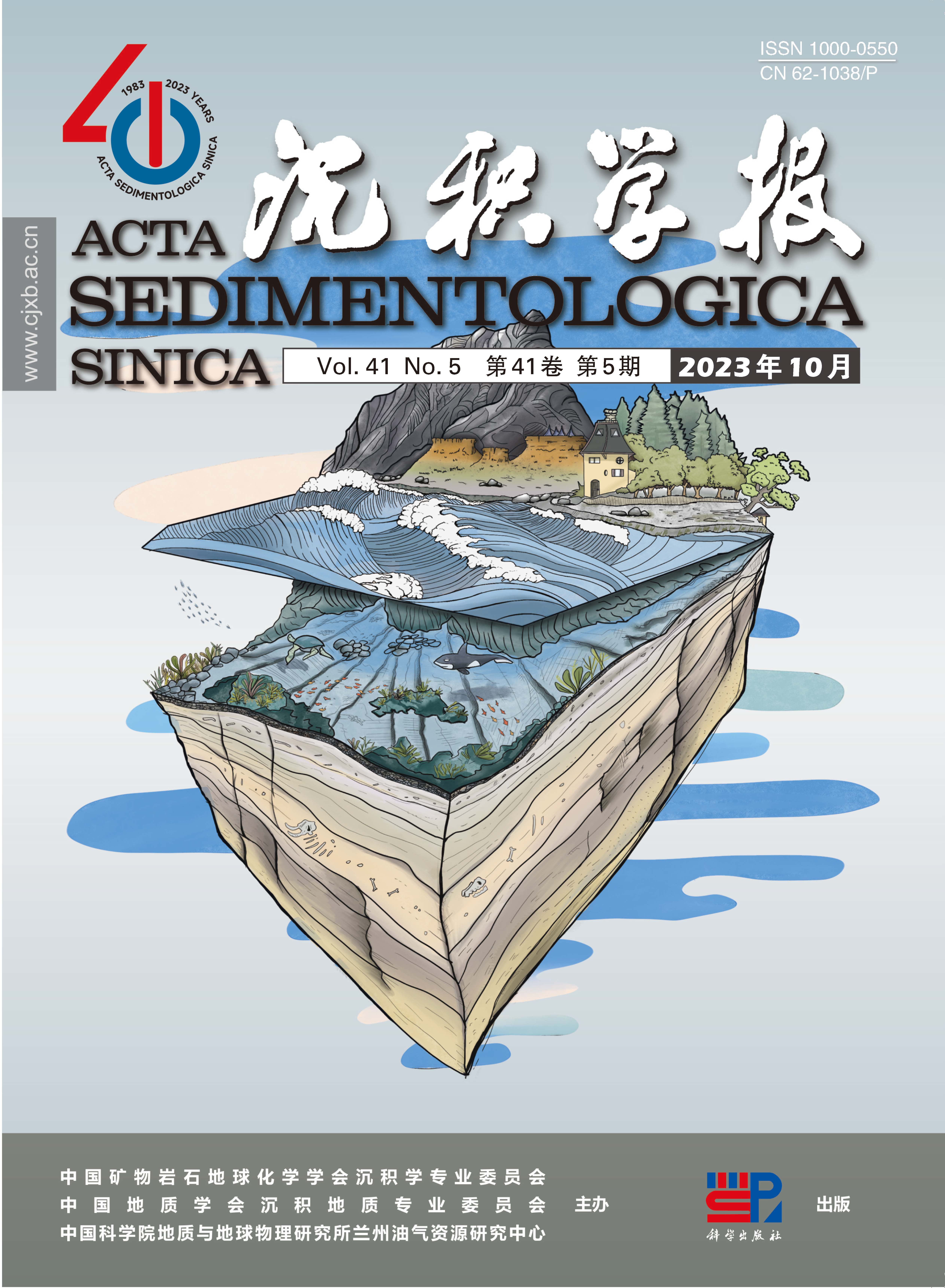


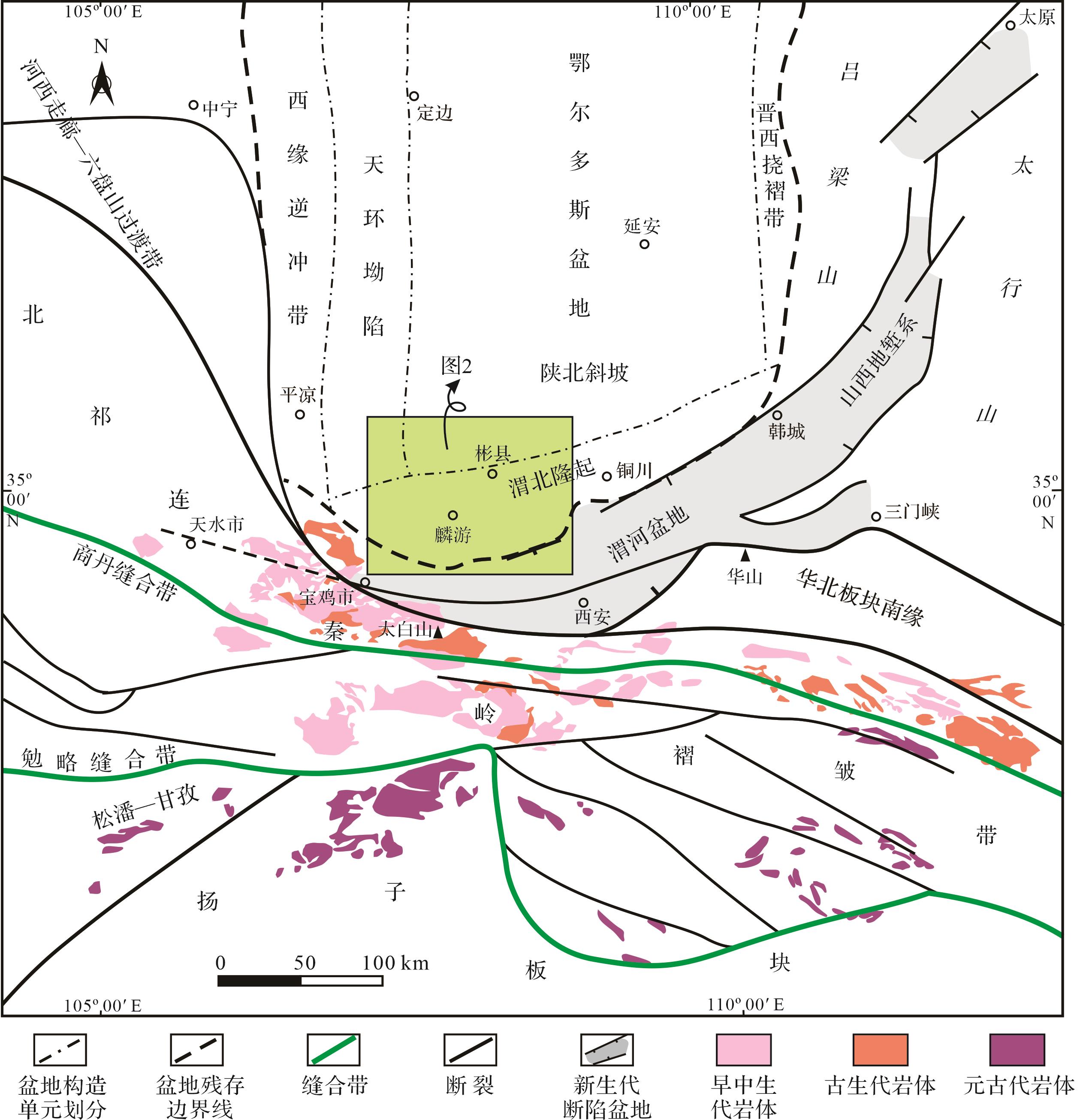



 DownLoad:
DownLoad:
